Range Rover Evoque: Interior Lighting
Interior Lighting
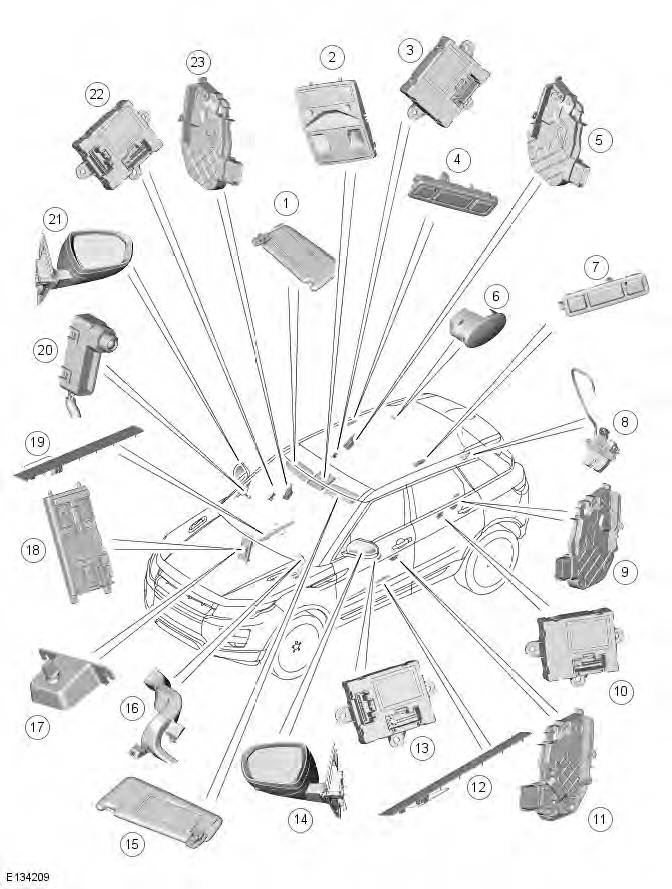
- RH (right-hand) vanity mirror lamp
- Front overhead console
- RH rear door module
- RH rear interior lamp
- RH rear door latch mechanism
- Load space lamp
- LH (left-hand) rear interior lamp
- Liftgate latch mechanism
- LH rear door latch mechanism
- LH rear door module
- LH front door latch mechanism
- LH front door sill lamp
- LH front door module
- LH approach lamp
- LH vanity mirror lamp
- LH front footwell lamp
- RH front footwell lamp
- CJB (central junction box)
- RH front door sill lamp
- Glove box lamp
- RH approach lamp
- RH front door module
- RH front door latch mechanism
The operation of the interior lighting system, with the exception of the door and mirror lamps, is controlled by the CJB (central junction box). Door and mirror lamp operation is controlled by the relevant door module.
In order to control the interior lighting system, the CJB receives inputs from the 4 door latch switches and the tailgate release motor. The system also interacts with the central locking system, illuminating the interior lamps and the mirror lamps on receipt of an unlock request. This request is transmitted to the CJB.
The front roof mounted interior lamps are operated by Sense (proximity sensing). The centre 'Courtesy' lamp is automatic with door unlock/opening and can be overridden to 'always on' by touching the lens. The courtesy lamps can be switched to 'always off' by touching the centre lens for a period of more than 3 seconds, while touching the lens again for more than 3 seconds will turn the courtesy lamp operation on again. The lights will flash to indicate that the required function has been selected.
The front interior lamp incorporates two outer map/reading lamps that are operated separately and are switched on/off by touching the lens. These operate independently of the interior courtesy lighting functionality.
The rear cantrail mounted interior lamps contain a 3 position rocker switch. Automatic (Courtesy) operation of the lamps can be overridden by moving the switch to the 'always on' or 'always off' position.
If 'Courtesy' lighting is active and a hinged panel is left open, the CJB will extinguish all interior lamps after a period of 15 minutes. If a manual request for interior lighting has been made, the CJB will extinguish the lamps after a period of 30 minutes.
Pressing the light symbol on the remote handset will activate the 'Approach Lamp' feature. When activated, the CJB illuminates the mirror lamps and a number of exterior lamps.
Transport Mode
All new vehicles will be delivered from the factory in transport mode. Transport mode inhibits a number of electrical systems and features, including the interior lamps, to eliminate quiescent drain from the battery during delivery. When the vehicle is in transport mode 'transp' will be displayed in the instrument cluster odometer.
To remove the vehicle from transport mode, the Land Rover approved diagnostic system must be connected during the PDI (pre-delivery inspection). For more information, refer to the PDI manual.
CONTROL DIAGRAM
NOTE: A = Hardwired; N = Medium speed CAN (controller area network) bus
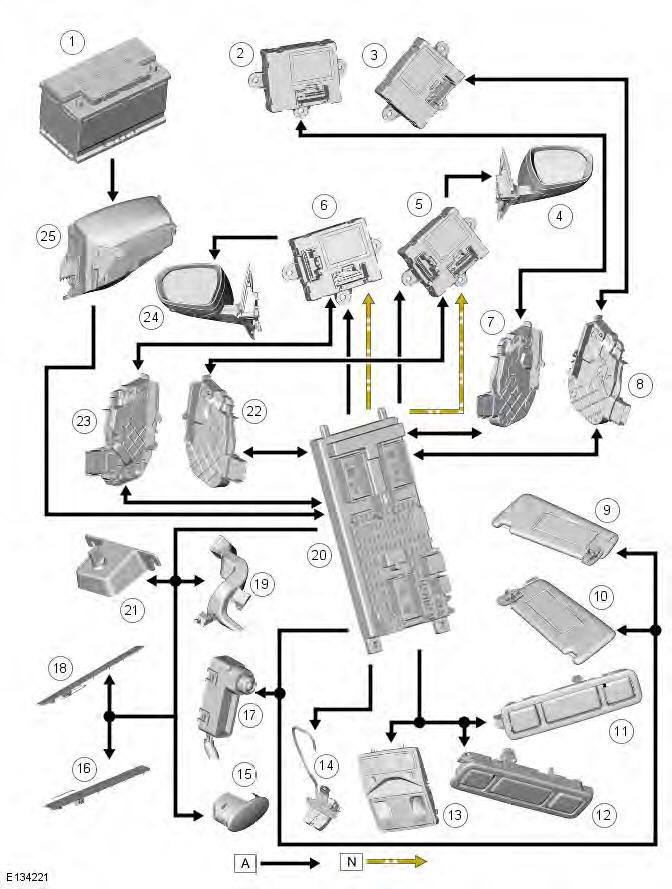
- Battery
- RH (right-hand) rear door module
- LH (left-hand) rear door module
- RH approach lamp
- RH front door module
- LH front door module
- RH rear door latch mechanism
- LH rear door latch mechanism
- LH vanity mirror lamp
- RH vanity mirror lamp
- RH rear interior lamp
- LH rear interior lamp
- Front overhead console
- Liftgate latch mechanism
- Load space lamp
- RH front door sill lamp
- Glove box lamp
- LH front door sill lamp
- LH front footwell lamp
- CJB (central junction box)
- RH front footwell lamp
- RH front door latch mechanism
- LH front door latch mechanism
- LH approach lamp
- BJB (battery junction box)
PRINCIPLES OF OPERATION
Operation and control of the interior lamps can be split into 3 main groups.
Front and Rear Interior Lamps, Footwell Lamps, Load Space Lamp and Front Door Sill Lamps
The CJB controls operation of these lamps by providing a voltage feed to both sides of each lamp. By increasing or decreasing the voltage supplied to one side of the lamp, the CJB controls the current flow through the lamp and thus the lighting level. This feature is controlled via the interior lamp Field Effect Transistor (FET), which is integral with the CJB and allows the CJB to ramp up and ramp down the illumination levels of the lamps when required. The CJB controls the ramp up time to 1.3 seconds, and the ramp down time to 2.6 seconds.
If the vehicle is involved in an accident violent enough to trigger the SRS (supplemental restraint system), the RCM (restraints control module) will provide a 250 Hz 'crash' signal to the CJB. On receipt of this signal the CJB will illuminate the front and rear interior lamps, the footwell lamps and the load space lamp for up to 30 minutes. The CJB will extinguish the interior lamps prior to the 30 minute period elapsing if the crash signal from the RCM is replaced with a 10 Hz 'normal' signal.
Vanity Mirror and Glove Box Lamps
The vanity mirror lamps and the glove box lamp are provided a voltage feed by the CJB. When vanity mirror lamp is fitted, the operation is automatic when deploying or stowing the sunvisor, the power side is switched in causing the lamp to illuminate. Glove box lamp illumination is controlled by a micro switch which is integral with the lamp assembly. When the glove box is opened, the switch contacts close creating a ground path for the lamp.
Mirror Lamps
The driver and front passenger door modules control operation of the mirror lamps. When a valid unlock request is received, the CJB notifies the driver and front passenger door modules via the medium speed CAN bus. On receipt of the CAN bus message, the door module illuminates the relevant mirror lamp by providing a feed and ground path.
Principles of Operation
For a detailed description of the Interior Lighting and operation, refer to the relevant Description and Operation section of the workshop manual. REFER to: (417-02 Interior Lighting)
Inspection and Verification
CAUTION: Diagnosis by substitution from a donor vehicle is NOT acceptable. Substitution of control modules does not guarantee confirmation of a fault, and may also cause additional faults in the vehicle being tested and/or the donor vehicle.
NOTES: If the control module or a component is suspect and the vehicle remains under manufacturer warranty, refer to the Warranty Policy and Procedures manual (section B1.2), or determine if any prior approval programme is in operation, prior to the installation of a new module/component.
When performing voltage or resistance tests, always use a digital multimeter accurate to three decimal places, and with an up-to-date calibration certificate. When testing resistance, always take the resistance of the digital multimeter leads into account.
1. Verify the customer concern
2. Visually inspect for obvious signs of mechanical or electrical damage
Visual Inspection

3. If an obvious cause for an observed or reported concern is found, correct the cause (if possible) before proceeding to the next step
4. If the cause is not visually evident, verify the symptom and refer to the symptom chart, alternatively check for diagnostic trouble codes (DTCs) and refer to the relevant DTC index
5. Check DDW for open campaigns. Refer to the corresponding bulletins and SSMs which may be valid for the specific customer complaint and carry out the recommendations as required
Symptom Chart

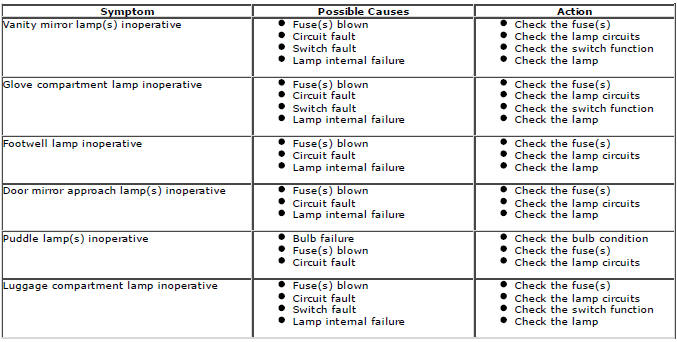
Pinpoint Tests
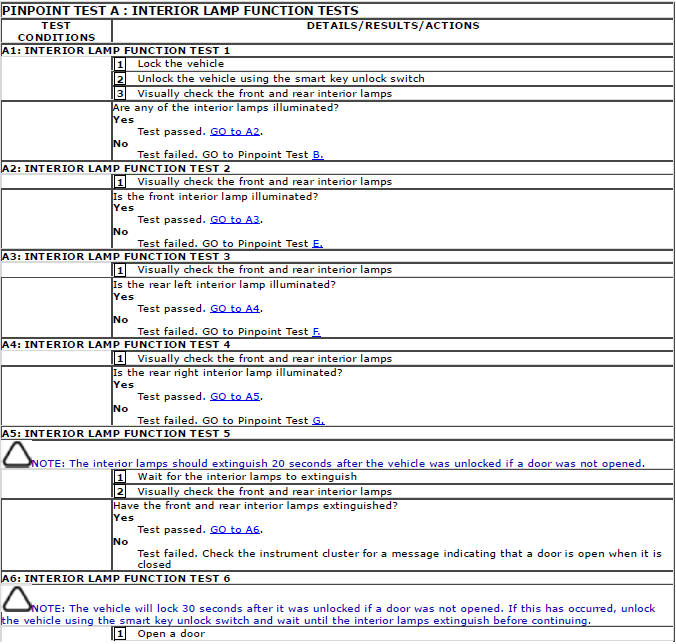
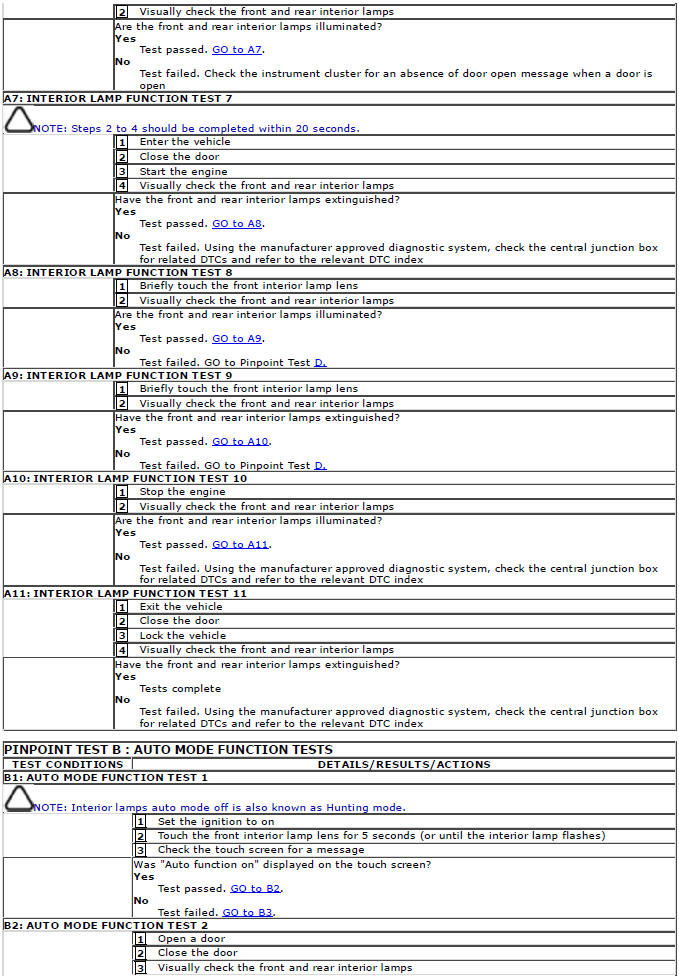
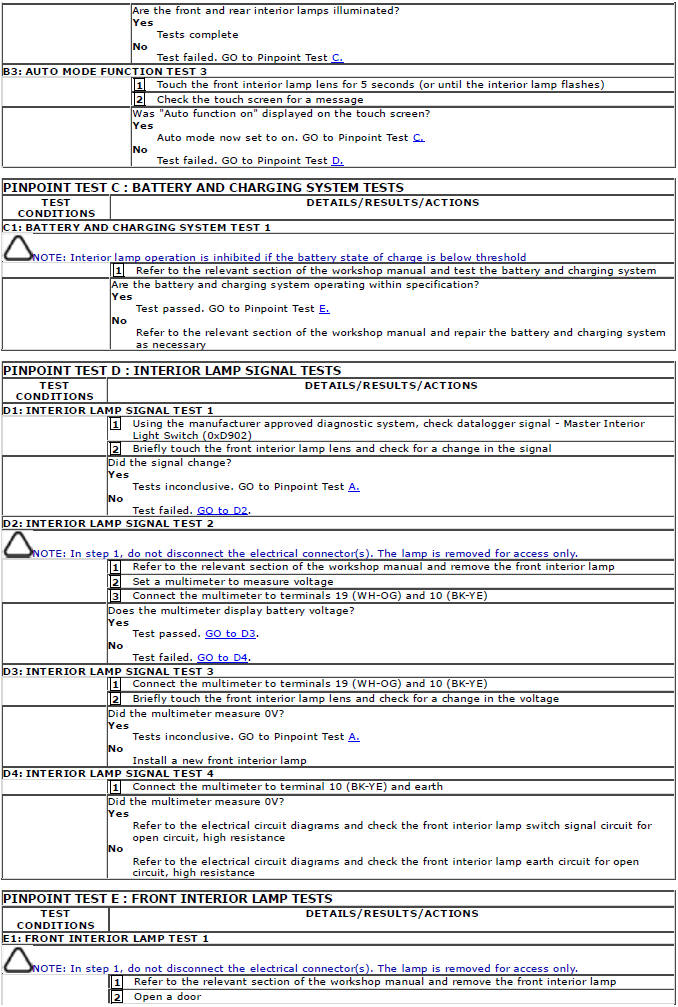
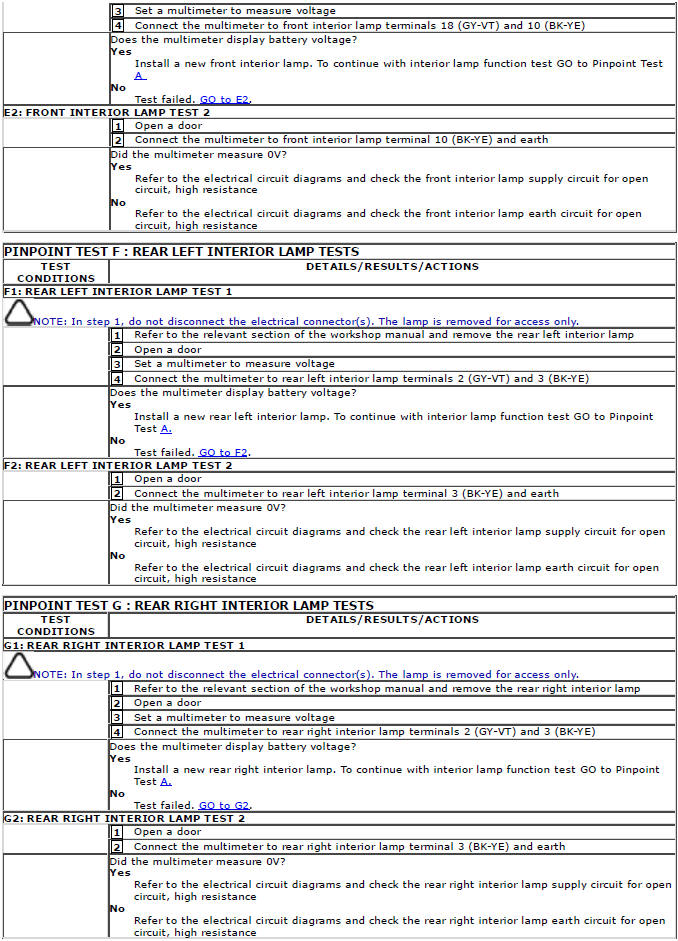
DTC index
For a complete list of all Diagnostic Trouble Codes (DTCs) that could be logged on this vehicle, please refer to Section 100-00.
REFER to: Diagnostic Trouble Code (DTC) Index - DTC: Central Junction Box (CJB) (100-00 General Information, Description and Operation).

